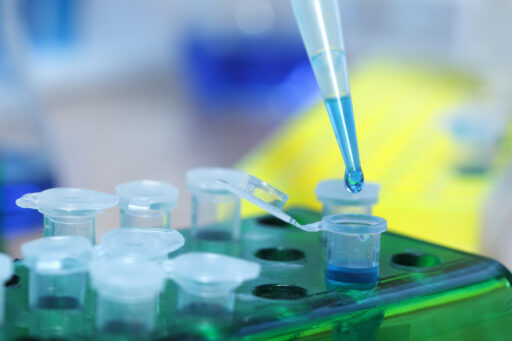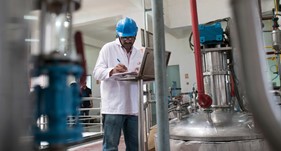 Green initiatives may be slowly gaining some traction across the pharmaceutical industry, but there is still a long way to go. These are some astonishing insights from sciencehistory.org.
Green initiatives may be slowly gaining some traction across the pharmaceutical industry, but there is still a long way to go. These are some astonishing insights from sciencehistory.org.
- “On a waste-to-product ratio, the pharmaceutical industry is one of the least environmentally acceptable, generating 25 to 100 pounds of waste for every pound of active pharmaceutical ingredient manufactured.”
- “When ibuprofen, the popular pain reliever that remedies headaches, stiff muscles, and fevers, was first manufactured in the 1960s, it generated more waste than drug. Annual production of 30 million pounds of ibuprofen generated 45 million pounds of waste, mostly tossed for scrap.”
- “Green chemistry continues to influence the pharmaceutical industry, but it remains challenging to get small- and medium-sized companies and the generics industry to learn and apply its principles.”
Unfortunately, the history of green transformation across the drug lifecycle is spotty, at best.
Green Chemistry for Generics: Route Selection
Consider the lifecycle of most APIs on the market – from the point where a pre-clinical development candidate for an NCE first emerges up to the point much later in the lifecycle where a generic version gets the green light.
 The transition to a generic version of a drug has never become the recognized point at which processes are redesigned to consider greener synthetic routes. Many companies take the path of least resistance – altering processes just enough to satisfy the intellectual property team. Typically, these ‘knock-off’ routes are tweaked to yield some improvements in scalability or cost, since the original chemistry route was never optimized to be less wasteful or less environmentally impactful. But they aren’t ‘green processes’ by any measure, though they give the appearance of ‘improvement.’
The transition to a generic version of a drug has never become the recognized point at which processes are redesigned to consider greener synthetic routes. Many companies take the path of least resistance – altering processes just enough to satisfy the intellectual property team. Typically, these ‘knock-off’ routes are tweaked to yield some improvements in scalability or cost, since the original chemistry route was never optimized to be less wasteful or less environmentally impactful. But they aren’t ‘green processes’ by any measure, though they give the appearance of ‘improvement.’
The most effective processes involve green chemistry by design (GCbD). GCbD involves incorporating green chemistry principles earlier rather than later in the manufacture of generic drugs.
A well-conceived, second-generation green route is the secret ingredient behind sustainable and cost-effective commercial manufacture of generic drugs. Many manufacturers and drugmakers still consider ‘green chemistry’ an expense, rather than an investment. In reality, savvy manufacturers are passionate about developing greener synthetic routes during the early stages of an API’s life cycle.
Why?
Three reasons. Lower costs, better EHS outcomes, and shorter lead times.
Careful route selection at the process research stage – and not later during process development – is essential to the development of an appropriate process which addresses both waste generation minimization and value-add objectives.
Green Chemistry By Design Is Good For Business

No business is immune from the drive towards profitability. So, while the virtues of GCbD are praiseworthy from a stewardship perspective, profitability is always a primary driver – and green chemistry does come with an upfront price tag. This has yielded a reluctance among cost-conscious drugmakers to pursue green chemistry earlier in generics development.
Upfront cost concerns, however, obscure the reality of green chemistry outcomes, which generate long-term economic and environmental benefits which more than offset the high initial investment.
How so?
Let’s summarize the benefits associated with choosing green chemistry by design for generic APIs:
- Increased efficiency. Through GCbD, the synthesis of generic APIs becomes significantly more efficient. Useless and wasteful steps are eliminated, leaving a cleaner, greener route with fewer registered starting materials and favorable throughput.
- Reduces compliance issues. In light of increasingly strict environmental and safety regulations, choosing a sustainable synthetic route early in process research eliminates headaches and punitive costs down the line.
- Prevents re-investigation of the synthetic route. Time is money, so it’s essential to choose the right route from the outset. Otherwise, it means circling back to re-investigate and modify the non-green route. Doing it right the first time saves critical resources. It also rescues organizations from the hassle of addressing cost, quality, safety, and environmental issues linked to non-green routes.
- Minimal impact on the environment. The procurement of efficient raw materials, utilization of minimal resources, limiting the use of toxic components, better control of genotoxic impurities, reduction of waste and energy use, and other green initiatives all minimize impact on the environment.
- Better customer and investor engagement. The world is increasingly becoming green-conscious, and so are investors and customers in the pharmaceutical industry. Organizations that are responsive to customer demands and pressures from investors can gain a competitive advantage.
- Boost in reputation. Green chemistry typically leads to a green reputation. Through green marketing, drug manufacturers can build a more appealing brand by promoting their use of sustainable and energy-efficient synthetic routes.
- Overall cost savings. Green chemistry by design is necessary for long-term profitability. Factors like enhanced efficiency and increased customer attraction potentially translate to profitability, minimizing the impact of mounting manufacturing pricing pressures in the generics space.
These benefits are possible largely due to new technologies and approaches used in process research. Here’s a peek at the technology used to develop greener processes for generic APIs.
- Catalysis. This involves incorporating inexpensive enzymatic conditions at the process research stage. It reduces the quantity of reagents by-products, reaction steps, and E-factors.
- Flow chemistry. Improved flow chemistry technology speeds up the process research stage. It allows for the development of an optimized and scalable greener route.
- Parallel screening. Parallel reaction screening is an incredible time-saver that provides improved test coverage. By running hundreds of reactions in parallel, finding abnormalities and fine-tuning becomes faster and simpler, accelerating route scouting.
For a more in-depth look at green chemistry by design, refer to this publication authored and presented to the scientific community by a Neuland team member. In addition, you can check out this presentation at the 2014 International Green Chemistry conference by a member of the Neuland Labs team.
 Neuland Labs and Green Chemistry
Neuland Labs and Green Chemistry
Why not design a greener, less wasteful synthetic route in the first place?
At Neuland, we believe green chemistry is a worthwhile endeavor for our clients, since careful design of API manufacturing processes goes hand in hand with cost-effectiveness. Our GCbD initiatives for Generic Drug Substances encompass benign by design chemistry, atom economy, and the use of specific enzymes and chiral substrates to boost yields.
As technological advances continue to leave their footprint on API manufacturing, we look forward to discovering more opportunities to develop greener and greener synthetic routes.










